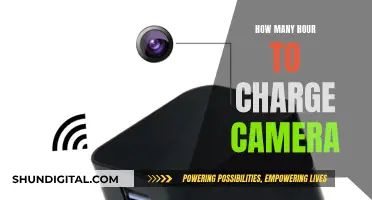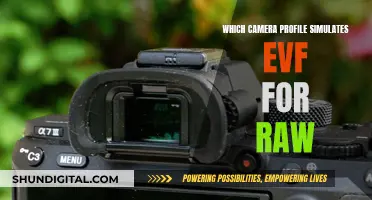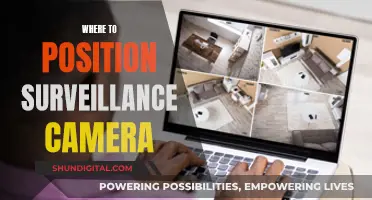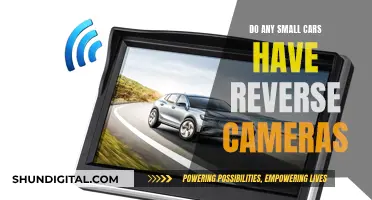
Getting a speeding ticket in the mail is never fun, especially when it's from a camera and you feel there's no way to dispute it. However, there are several ways to fight a traffic camera speeding ticket. Firstly, it's important to examine your ticket and check the date, time, and location. If someone else borrowed your car, you can't be prosecuted. You should also make note of the exact code section you're cited for violating and review any photos included to confirm it's your car. If the photos are blurry, this could be your best defense. If you were driving, try to remember what you were doing at the time and write down any details, as you may have been making a legal maneuver. You must plead not guilty if you want to dispute the ticket and request a formal hearing. Research the applicable law and look for cases in your city or county about traffic cameras. You can also request the production of documents, such as maintenance records for the camera, to establish that it was regularly monitored and maintained. When it's time for your hearing, arrive with copies of any documents you intend to use as evidence and treat the judge and courthouse staff with respect. You can then present your case and dispute the authenticity of the photograph, for example, by arguing that the prosecution can't prove you were driving.
| Characteristics | Values |
|---|---|
| Check the ticket details | Ensure you were driving the car when the ticket was issued. |
| Examine the photos | Argue that the photo is too blurry to confirm it's your car or that you were driving. |
| Plead not guilty | Plead by mail, online, or in court, and request a full formal hearing. |
| Research the law | Look for cases in your city or county about traffic cameras and their legality. |
| Request documents | Ask for full maintenance records for the camera and the traffic light or speed monitoring system. |
| Challenge the evidence | Dispute the authenticity and admissibility of the photographs as hearsay. |
What You'll Learn

Argue that the photo is too blurry to confirm your car or license plate
If you've received a speeding ticket from a traffic camera, you can challenge the authenticity of the photo as part of your defense. If the license plate isn't clearly visible, you may be able to argue that the photo is unclear and that it's therefore difficult to confirm that the car is yours.
In some jurisdictions, a red light camera photo is considered hearsay, which is an out-of-court statement presented in court to prove the truth of the matter asserted. Hearsay evidence is generally inadmissible unless it fits into one of the exceptions. However, there are over two dozen hearsay exceptions, and it's worth researching whether this objection could be used in your jurisdiction.
You can also dispute the authenticity of the photograph if no one from the company that maintains the camera shows up to testify. You could object to the use of the photographs on the grounds of a lack of foundation. For the prosecution to rely on the photos, they must present evidence that the camera, the system that connects it to the traffic light, and the traffic light itself were all functioning properly. Without this foundation, the photo may not be reliable and could be deemed inadmissible.
If the photos are clear and the judge allows them, but none of them clearly show you driving, you can argue that the prosecution cannot prove it was you driving the car.
Fight Camera Tickets: Know Your Rights, California!
You may want to see also

Prove the camera's margin of error is too high
To beat a traffic camera speeding ticket, you can try to prove that the camera's margin of error is too high. Here are some steps and strategies to help you build your case:
Check the Evidence
First, carefully examine the evidence provided by the authorities. This typically includes photographs taken by the traffic camera. Note the timestamps on the photos and calculate the time it took for the camera to capture the successive images. Request additional evidence if necessary, such as maintenance records for the camera and speed monitoring system.
Calculate Your Speed
Using the time interval between the photos, calculate the distance your car travelled during that period. Compare this to the speed limit of the road and determine if the camera's calculation of your speed is accurate. You can also use landmarks in the photos to estimate the distance travelled and calculate your speed.
Challenge the Accuracy
If there is a discrepancy between your calculations and the camera's readings, you can challenge the accuracy of the camera. Request information about the camera's margin of error and any calibration records. Check if the camera has been properly tested and certified for accuracy.
Present Your Case
If you have evidence that the camera's margin of error is too high, you can present your case in court. Highlight any inconsistencies between your calculations and the camera's readings. Bring attention to any lack of calibration or testing records. Emphasize that the burden of proof lies with the prosecution to demonstrate that the camera's readings are accurate.
Provide Alternative Explanations
In addition to challenging the camera's accuracy, you can also provide alternative explanations for the discrepancy. For example, you can argue that the camera failed to account for variables such as road conditions, weather, or the presence of other vehicles. Suggest that these factors may have influenced the camera's readings and contributed to the margin of error.
Consult a Lawyer
While it is possible to build your case independently, consulting a lawyer can significantly strengthen your defence. A lawyer can guide you through the legal process, help gather evidence, and provide expertise in challenging the camera's margin of error. They can also assist in identifying and interviewing witnesses who can support your case.
How to Rehearse Slideshows with Camera Access
You may want to see also

Prove you weren't driving
One of the first steps to take when trying to fight a speeding ticket from a traffic camera is to review the evidence. In most cases, you have the right to see the photos or videos that were used to determine your speed. These can often be requested from the police or the court handling your ticket. Reviewing the evidence is crucial as it may not be clear, or it could contain details that might help your case. For example, the time stamp could show that you were not driving at that particular time, or the image may not clearly show your vehicle or license plate. These kinds of evidence can help you dispute the ticket and prove that you were not driving.
Now, if the evidence doesn't provide any clear clues to help your case, you can try to prove that you weren't the person driving the vehicle at the time of the infraction. This is a common strategy for fighting automated traffic tickets and can be successful if you can provide evidence that you were elsewhere. For example, you could use receipts, witness statements, or even GPS data to show that you were at a different location. If you can provide solid evidence that places you away from the location of the traffic camera at the time of the incident, it could create reasonable doubt about your involvement.
Another strategy is to scrutinize the accuracy and calibration of the speed camera. These devices are mechanical and electronic, and as such, they can malfunction or provide inaccurate readings. You can request maintenance and calibration records for the specific camera that caught you. If it hasn't been properly maintained or calibrated, the accuracy of its readings could be called into question. Similarly, if the camera has a history of providing erroneous readings, your ticket could be dismissed.
Additionally, it's important to understand the rules regarding traffic camera placement and use in your jurisdiction. There are often specific regulations that govern where and how these cameras can be used. For example, there might be requirements for signage warning drivers of camera use, or the camera might need to be placed in a specific location to be considered legal. If you can prove that the camera was not used or placed according to these regulations, it could provide grounds for your ticket to be dismissed. These rules can often be found on government or transportation websites.
Choosing the Right Camera Mode for Wedding Photography
You may want to see also

Argue the photo is hearsay
If you've received a traffic camera ticket, you may be able to argue that the photo is hearsay and therefore inadmissible in court. Hearsay is defined as an out-of-court statement presented in court to prove the truth of the matter asserted. In this case, the photo is an out-of-court "statement" that the prosecution is attempting to use to prove you violated the traffic law.
Hearsay evidence is generally inadmissible unless it fits into one of the exceptions. There are more than two dozen hearsay exceptions, and some courts have fit traffic camera photos into these exceptions, but others have not. You'll need to research the issue to find out if this objection is available in your jurisdiction.
For example, in Broward County, Florida, a red light camera photo is considered hearsay. However, in other jurisdictions, it is contested whether a red light camera photo is considered hearsay. You may also be able to argue that the use of the camera photo is a violation of your Sixth Amendment right to confrontation. The Constitution guarantees you the right to confront your accusers, and a photo does not allow you to cross-examine a witness who maintains the records and system associated with the camera.
Tennessee Camera Tickets: Do I Have to Pay?
You may want to see also

Attack the lack of evidence
If you've received a speeding ticket from a camera, you might be able to fight it by attacking the lack of evidence. Here are some ways to do that:
- Check the photos provided as evidence. If they are blurry, it may be difficult to confirm that the car is yours. If there's no clear photo of you in the driver's seat, the prosecution can't prove that you were driving.
- Argue that the prosecution can't prove it was you driving the car. This is a valid defence if you live in a jurisdiction that requires tickets to follow the driver, not the registered owner of the car.
- Argue that the traffic light was not functioning properly. The prosecution must prove that the traffic light was working properly in order to prove that you ran a red light.
- For a speeding ticket, argue that the speed detection system was not functioning properly. The prosecution must prove that the speed detection system was working properly for the photo to be valid evidence that you were speeding.
- Argue that the camera was not properly calibrated or maintained. Request maintenance and calibration records to see if the camera was functioning correctly at the time of the violation.
- Argue that the signage was missing, obscured, or incorrectly placed. Take photos to show the current state of the signage.
Where Does Your Device Store Camera Raw Presets?
You may want to see also
Frequently asked questions
First, check the date, time, and location of the ticket, and confirm that you were the one driving the car. You should also make a note of the code section you're cited for violating and review any included photographs.
You must plead not guilty if you want to dispute the ticket. Some jurisdictions allow you to respond to the citation by mail or online, while others require an appearance in traffic court. Check your citation and plead not guilty before the deadline, which is typically within 30 days.
You will receive a date for a formal hearing or trial. Before the hearing, research the applicable law and look for cases in your city or county about traffic cameras. You should also request the production of documents, including full maintenance records for the camera, and traffic light or speed monitoring system.
Arrive at the courthouse with copies of any documents you intend to use as evidence. Listen to the prosecutor's case and then present your defence. Challenge the admissibility of the photograph as hearsay, assert your right to confront witnesses, and dispute the authenticity of the photograph.
If the photos are unclear, argue that the prosecution cannot prove it was you driving the car. Additionally, the photo does not provide proof that the traffic light or speed detection system was functioning properly. You can also raise other defences, such as the necessity to speed due to an emergency.







